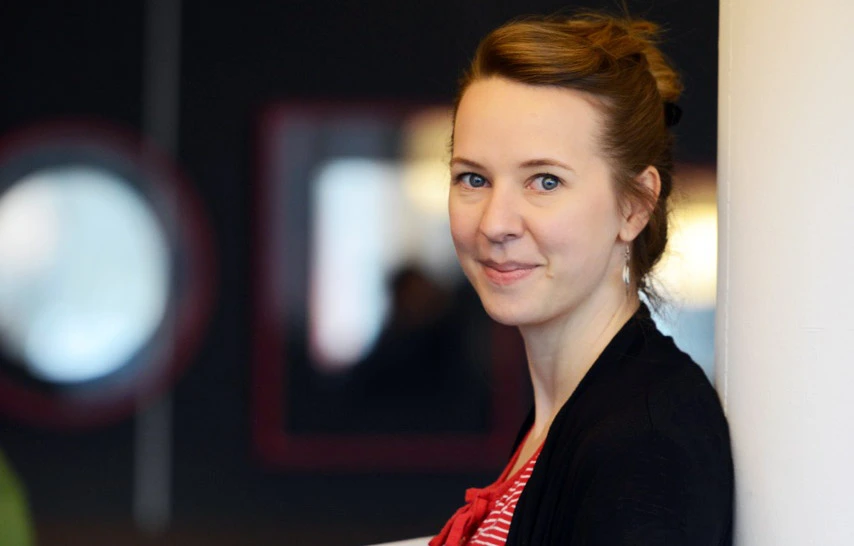Physicist with her own research group on solar fuels
In conversation with Kathrin Aziz-Lange
She originally wanted to become a documentary film maker. It was Kathrin Maria Aziz-Lange’s childhood dream. However, she then studied physics and got a PhD. Because it opens up infinite possibilities, she says. Now she is in charge of setting up a young team of Helmholtz researchers to look at solar fuels at the Helmholtz-Centre Berlin (HZB). Without a camera this time. Music, art, sports – the 31-year-old has many passions. She is currently overflowing with new ideas for her research that are waiting to be put into action.
What are you working on at the moment?
We are looking at material systems that split water using sunlight and chemically store the fleeting solar energy as hydrogen fuel. Our specific task is to look at in-operando-characterization of defects. The aim is to find their fingerprint in the electronic structure of materials used for splitting water, i.e. the catalysts and semiconductors. For that we have a new cell in which we use soft x-ray emission spectroscopy to examine these materials while they are in contact with liquids and energized.
Office or lab – where do you spend most of your time?
After my daughter was born I telecommuted up until the end of last year. I will work predominantly in an office in the near future.
Since when have you been working in Adlershof?
On and off since 2009. I carried out some measurements at HZB’s electron storage ring for my diploma and then moved to HZB for good to write my dissertation. After my postdoc studies at Max-Born-Institute, I went to the École polytechnique fédérale de Lausanne in Switzerland as part of the Helmholtz postdoc program.
How do you get to work?
I commute between Adlershof and Wannsee and I’ll be teaching at the University of Bielefeld soon. I use the car to get to my workplaces in Berlin and I will take the train to Bielefeld.
Your favorite spot in Adlershof is…
…the Ernst-Ruska-riverside of Teltow canal.
Which qualities do you value?
The capacity for enthusiasm and motivation. Both can move mountains.
What are you passionate about apart from physics?
Many things. I like to make music. I took violin lessons for several years, I play some guitar and the piano, and I sing. I have a small band with my brother and some of my friends that I play with at family gatherings. I’m also fascinated by art. That’s why I particularly enjoyed examining art and other cultural artefacts at the Louvre in Paris during my final thesis on spectroscopy. I also paint, mostly floral patterns, but also portraits. Sports are also great. I do gymnastics, hockey, and volleyball, and I enjoy scuba diving and even have a rescue diver certificate. But I don’t have time to do sports at the moment.
When did you last try something new?
When you have a child, you get into situations daily where you try new things. My daughter can talk her head off, but she is very careful when it comes to walking. So I try to encourage her again and again with new ideas to take the next step.
What is it you can’t do?
Keeping the house tidy is not a hobby of mine. I’m more the chaotic type.
What were you really moved by recently?
The terrorist attacks in Paris last autumn.
If you ever decide to emigrate, where would you go?
I am an avid traveler. But the more I’ve seen of the world, the more I appreciate Berlin and its surroundings. There is much to see and do in terms of culture and the countryside is very close.
How do you stay inspired?
I draw a lot from my interdisciplinary work environment. Whenever I talk to colleagues from other fields, I think about whether and how my research could help them find solutions for their own scientific problems. That way I get new ideas.
The interview was conducted by Sylvia Nitschke for Adlershof Journal
